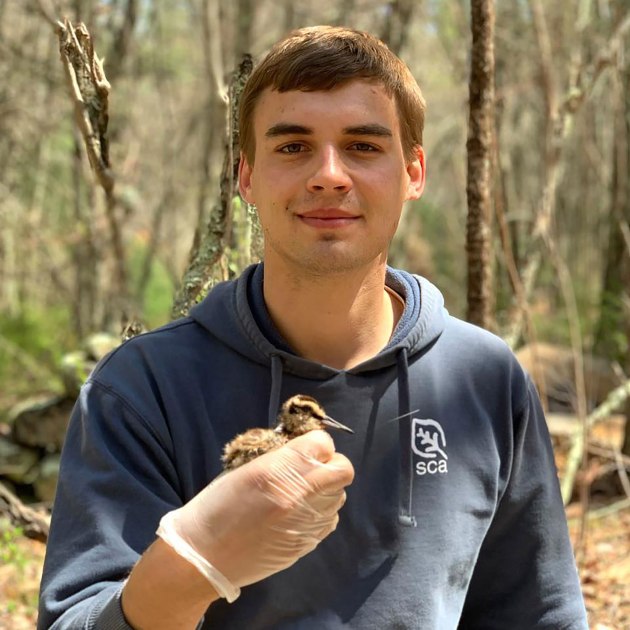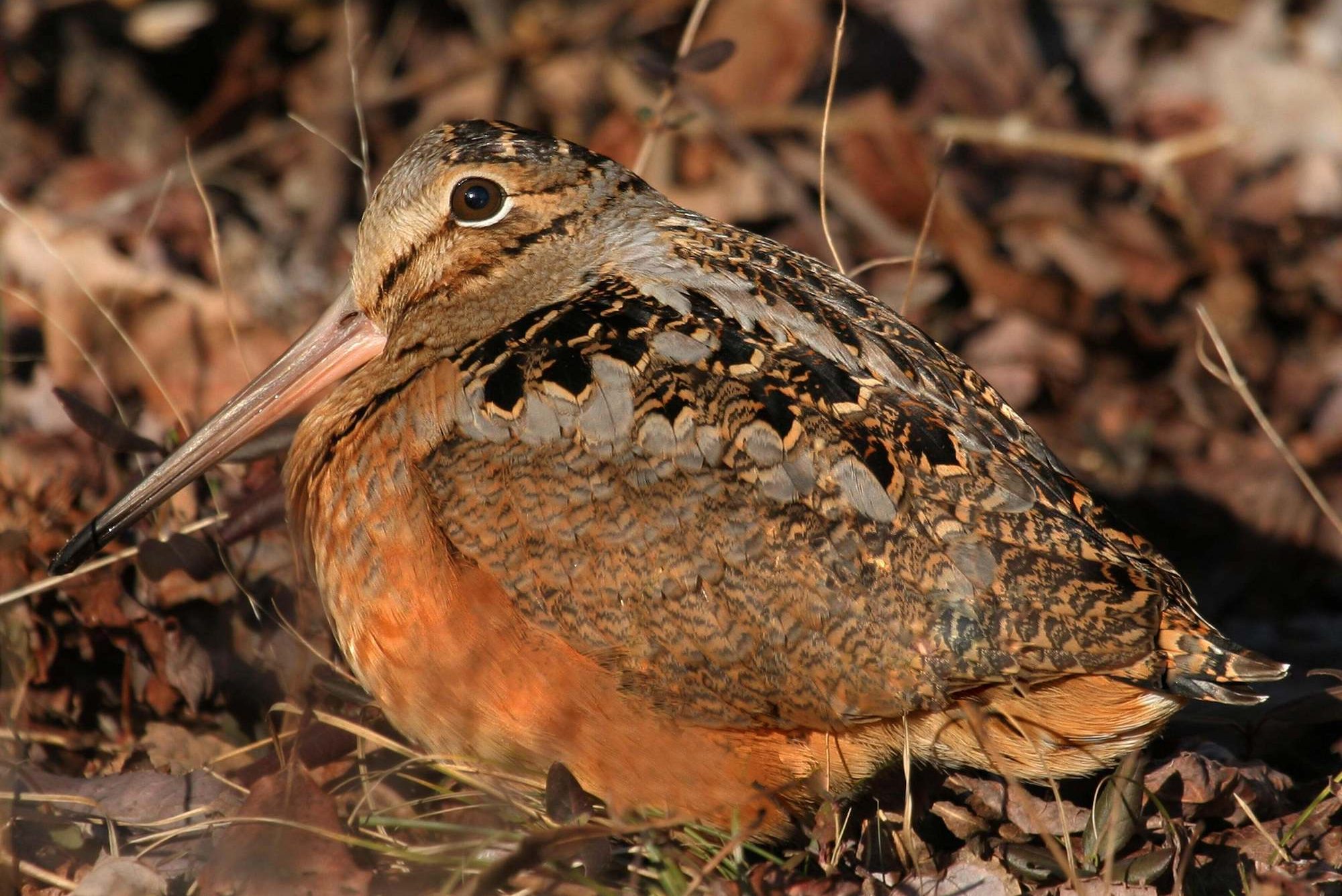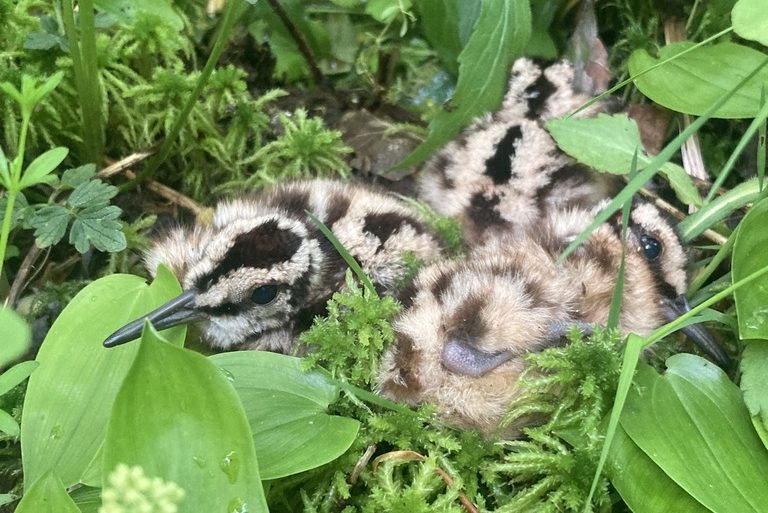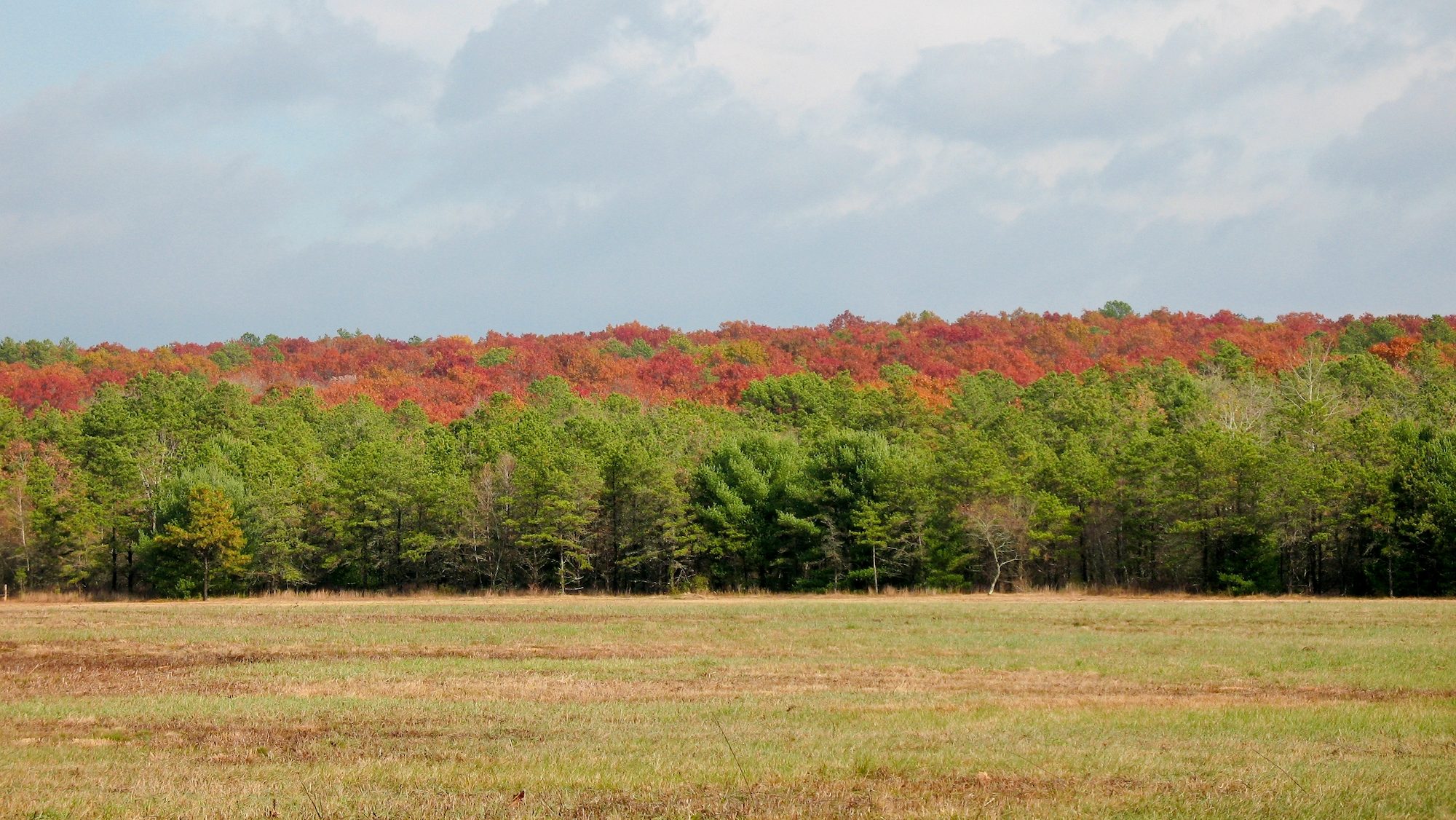Nearly all migratory birds migrate first, then nest once they arrive where they’re going. To do otherwise would be counter-intuitive, a process requiring a tremendous amount of energy all at once. But the American woodcock—a migratory shorebird found in the eastern United States—may do just that.
Become a Member
Make a lasting impact for nature when you join The Nature Conservancy
Known as itinerant breeding, it’s a behavior so rare only about 10 birds, including the woodcock, are believed to practice it. For the first time, a research team has found direct evidence of it. Their study, led by recent University of Rhode Island PhD Colby Slezak, was published in the Proceedings of the Royal B Society in April.
In this Q&A, Slezak, now a biologist specializing in migratory birds for the U.S. Fish and Wildlife Service, tells how the research came about and why it matters for efforts to help conserve the bird, whose populations have declined since the 1960s.
- How did you come to research the American woodcock?
-
My advisor Scott McWilliams had been running long-term woodcock research in Rhode Island since about 2010. He’s expanded this project to work with the Eastern Woodcock Migration Research Cooperative, which is headed out of the University of Maine. Scott has been working with them to tag American woodcock. First he tracked birds with antennas locally, but with the advancement of GPS technology, you can now track woodcock and other birds during their migration.

Colby Slezak holds an American woodcock chick, banded as part of Slezak’s work assessing chick survival in Rhode Island. © Adriana Hughes, University of Rhode Island This collaborative project is in the Atlantic flyway, all the way from Atlantic Canada down to Florida. We’ve been working with different state and federal agencies, and then the University of Maine and the University of Rhode Island are the two universities that have grad students actually conducting this research.
I started as a grad student in 2019, working on this project in 2021 and 2022. But because this is a larger collaborative, I was able to rely on birds from other states that were tagged as part of this larger cooperative from 2018 to 2022.
- What did that tagging process look like?
-
You go out in fields, where woodcock roost at tonight—most birds roost in trees, but woodcock roosts out in fields on the ground. You capture them on the ground and then take some morphometric measurements—things like bill length, the width of the outer three primaries [or wing feathers], for example. We put the tag on, which usually takes about two people: one person holding the bird, one person actually fitting the transmitter. With the transmitter on, the bird can walk and fly completely normal. Eventually [the transmitters] fall off.
- What were you hoping to learn from tracking the birds?
-
I had hoped that by having GPS tags, I could track the birds to their wintering ground, and then in the spring, I’d be able to find their nests again [in Rhode Island] because I could follow their GPS locations.
But the second year, those females didn’t come back to Rhode Island, which is how we sprang upon this idea that these females may go different places each year. So we started relying on [members of the cooperative in other states] to go out and try to verify field-nesting attempts.
For a few of these birds, we had someone go out, they found the nest, and then I saw [via GPS data] that that bird migrated and looked like it was nesting again. That’s how we first got the idea that these birds are moving different places, and they’re also in some cases moving really far between nesting times. Then I used that larger dataset to identify this at a much larger scale.

American woodcock photographed in New Jersey. © Damon Noe / TNC
- How unusual is this pattern?
-
It’s been expected in about 10 species. But woodcock are the only species that we have direct evidence of, meaning we found a nest in one location, like, let’s say, Virginia, and then we found another nest all the way up in Maine. A lot of those other species are pretty small though, and we don’t have GPS technology [small enough] yet. So, it was a little bit luck, and a little bit the fact that woodcock are a larger species and have GPS tags [available].
- Why would this pattern be unusual?
-
So conventional life history theory would say that birds have evolved to migrate in the spring and fall. They’re following the seasonal availability of resources, leaving cold regions of the country to follow food availability and survive winters. Then they return north in the spring to reproduce because there’s this abundance of food when things green up. They’ve also separated those periods: Once spring migration ends, they can start reproducing. They can’t do both at once because they’re so energetically expensive.
But woodcock here are combining those two things. They’re going to their wintering grounds in the winter, and then they’re starting to breed as they move north in the spring.

Woodcock chicks. © Brian Starzomski / iNaturalist
- Why would they do that?
-
We don’t know yet. We think that woodcock are probably moving north in response to nest failure. So if their nest fails, or if their chicks die, they’ll probably move farther north and nest again. But it’s possible that there are woodcock having completely successful nests, the chicks are fledging, and then the woodcock moves north to nest again that same year. We don’t know. But either way, it’s amazing that they have taken these two periods of the annual cycle and combined them.
- One of the places you tagged birds was the Francis Carter Nature Conservancy Preserve in Rhode Island, a haven for a number of struggling bird species. How does understanding nesting patterns affect potential conservation efforts for these birds?
-
I think what this study shows is that having those sites [like the preserve] dispersed across the landscape is important, especially when we’ve degraded so much of the habitat that these birds historically were relying on. They really do need a spread of different places where they can nest as they make their migrations northward in the spring.
Woodcock are often managed at the state level. But this kind of study shows that you can’t manage for Rhode Island-breeding woodcock, you’re really managing for the woodcock population as a whole. In any one year you may have woodcock from Florida nesting in Rhode Island, or woodcock from Virginia. So, you really have to create woodcock habitat and maintain it across a range.

Francis Carter Nature Conservancy Preserve is one of the locations Slezak tagged American woodcock. © Tim Mooney / TNC
- What kind of habitats are we talking about?
-
One of the really important things for woodcock nesting is the male’s aerial courtship displays. For that they need young forests. But woodcock also require these more mature forest areas for feeding and wetlands because they like moist soils. They eat a lot of earthworms, and their bills are adapted for feeding under the soil. So if you look at woodcock management plans, they often include this mosaic of different habitats.
More from TNC Magazine
A version of this Q & A ran in Nature Conservancy magazine’s Issue 4, 2024. Read other stories from that issue — including a look at California’s “Bay of Life.”
A previous grad student in Scott’s lab Roger Masse showed that there was higher songbird diversity in sites where woodcock management was occurring. Between that and the fact that they use such a diversity of habitats, they’re really a good species for trying to make the case that if you manage for woodcock you can help a bunch of other species in the process.




Has anyone asked or answered the question of what woodcocks ate prior to European colonization and the introduction of earrthworms? Do they still utilize those food resources in the few areas that lack earthworms?
We have them in northern Wisconsin. One time in May a male was doing his mating flight and “peents” and my husband mimicked his call and got it to land right in front of us. We have a young forest on a clean wild river. No chemicals used here!
This is fascinating – I’ve been fortunate enough to spy a woodcock boogying along a trail in Carter Preserve, as well as see one in the woods. My little hiking posse loves them!
I’m certainly no expert on birds but I find two things interesting in this article. I don’t understand how they don’t know if the initial nesting is successful or not. And secondly, it seems intuitive to me that a second nesting attempt might take place further north. Dont many species of birds have more than one brood per year? I know that bluebirds certainly do. I assume woodcock migrate north in an attempt to keep being able to eat earthworms? Maybe theyre harder to find in the south during warmer months.
We had a woodcock nesting in our forest outside Chapel Hill NC in March 2019 and it had 4 eggs. Photos are on this page – https://ourhabitatgarden.org/home/habitat/north-carolina/nc-birds-p1/.
I have other photos if you think they’d be helpful.